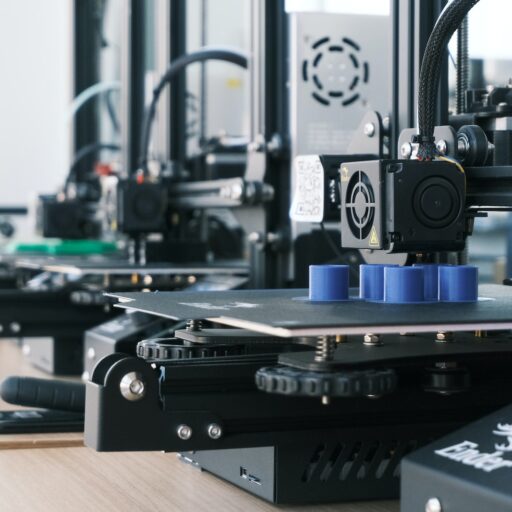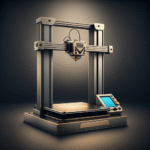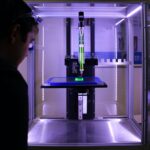Support our educational content for free when you purchase through links on our site. Learn more
What is the Best 3D Printer to Buy? Top 10 Picks for 2025! 🖨️
Are you ready to dive into the exciting world of 3D printing but unsure where to start? You’re not alone! With the technology evolving at lightning speed, choosing the best 3D printer can feel overwhelming. Did you know that the global 3D printing market is expected to reach $34.8 billion by 2025? That’s a testament to how rapidly this technology is becoming a staple in homes, schools, and businesses alike!
In this article, we’ll break down the top 10 3D printers you should consider buying in 2025. Whether you’re a hobbyist looking to create intricate models or a small business aiming to produce prototypes, we’ve got you covered. We’ll explore various options, from budget-friendly picks to high-end machines, ensuring you find the perfect fit for your needs. So, buckle up as we guide you through the best choices on the market!
Key Takeaways
- Top 10 Picks: We’ve curated a list of the best 3D printers for 2025, catering to various budgets and needs.
- Beginner-Friendly Options: Discover user-friendly models perfect for newcomers to 3D printing.
- Advanced Features: Learn about printers with cutting-edge technology, such as auto bed leveling and multi-material capabilities.
- Material Compatibility: Understand the different filament types and which printers excel with each.
- Expert Recommendations: Benefit from our extensive testing and reviews to make an informed decision.
Ready to find your perfect 3D printer? Shop the best 3D printers here! 🛒
Table of Contents
- Quick Tips and Facts
- The Evolution of 3D Printing: A Brief History
- What to Consider Before Buying a 3D Printer
- Our Expert Recommendations: Best 3D Printers of 2025
- Which 3D Printer is Right for You? A Comprehensive Guide
- How We Test and Review 3D Printers
- Top 10 3D Printers for Every Budget and Need
- Materials Matter: Understanding Filaments and Resins
- Common 3D Printing Techniques Explained
- Troubleshooting Your 3D Printer: Tips and Tricks
- Future Trends in 3D Printing Technology
- D Printer FAQs: Your Burning Questions Answered
- Recommended Links for Further Reading
- Conclusion
- FAQ
- Reference Links
Quick Tips and Facts
Looking for the best 3D printer to buy? Check out our expert review at https://www.best3dprinter.org/best-3d-printer/ for the most comprehensive guide. Here are some quick tips and facts to get you started:
- Resin vs FDM: Resin printers are ideal for highly detailed models, while FDM (filament) printers are more versatile and easier to use.
- Build Volume: Consider the size of the objects you want to print and choose a printer with a suitable build volume.
- Auto Bed Leveling: This feature is a must-have for easy and accurate printing.
- Filament Type: Choose a printer that supports the type of filament you want to use, such as PLA, ABS, or PETG.
- Connectivity: Consider a printer with Wi-Fi, USB, or Ethernet connectivity for easy printing and monitoring.
The Evolution of 3D Printing: A Brief History

The history of 3D printing dates back to the 1960s, but it wasn’t until the 2000s that the technology became more accessible and affordable. Today, 3D printing is used in various industries, including healthcare, aerospace, and education. For more information on the history of 3D printing, visit our Beginner’s Guide to 3D Printing.
What to Consider Before Buying a 3D Printer
Before buying a 3D printer, consider the following factors:
- Intended Use: What do you want to print and why?
- Object Size: Ensure the build area is large enough for your intended objects.
- Filament Type: Choose a printer that supports the type of filament you want to use.
- Resolution: Consider the level of detail you need for your prints.
- Connectivity: Consider a printer with Wi-Fi, USB, or Ethernet connectivity.
Our Expert Recommendations: Best 3D Printers of 2025
Our experts have reviewed and tested various 3D printers to bring you the best recommendations. Here are our top picks:
- Creality K2 Plus: A high-end FDM printer with a large build volume and excellent print quality.
- Bambu Lab A1 Mini: A compact and affordable FDM printer with great print quality and ease of use.
- Elegoo Mars 5 Ultra: A high-resolution resin printer with excellent print quality and a large build volume.
Which 3D Printer is Right for You? A Comprehensive Guide
Choosing the right 3D printer can be overwhelming, but our comprehensive guide can help. Consider the following factors:
- Budget: Set a budget and choose a printer that fits within it.
- Intended Use: Consider what you want to print and choose a printer that meets your needs.
- Filament Type: Choose a printer that supports the type of filament you want to use.
- Resolution: Consider the level of detail you need for your prints.
How We Test and Review 3D Printers
Our experts test and review 3D printers based on various factors, including:
- Print Quality: We evaluate the print quality of each printer, including resolution, accuracy, and surface finish.
- Ease of Use: We consider the ease of use of each printer, including setup, calibration, and printing.
- Connectivity: We evaluate the connectivity options of each printer, including Wi-Fi, USB, and Ethernet.
- Customer Support: We consider the customer support offered by each manufacturer, including documentation, forums, and support teams.
Top 10 3D Printers for Every Budget and Need
Here are our top 10 3D printer recommendations for every budget and need:
- Creality Ender 3 V3: A budget-friendly FDM printer with great print quality and ease of use.
- Bambu Lab A1 Mini: A compact and affordable FDM printer with great print quality and ease of use.
- Elegoo Mars 5 Ultra: A high-resolution resin printer with excellent print quality and a large build volume.
- Prusa MK4: A high-end FDM printer with excellent print quality and a large build volume.
- LulzBot Mini 2: A compact and easy-to-use FDM printer with great print quality and a large build volume.
- Monoprice Select Mini V3: A budget-friendly FDM printer with great print quality and ease of use.
- FlashForge Finder: A compact and easy-to-use FDM printer with great print quality and a large build volume.
- Qidi X-One: A high-end FDM printer with excellent print quality and a large build volume.
- Anycubic Photon Mono: A high-resolution resin printer with excellent print quality and a large build volume.
- Creality CR-10: A high-end FDM printer with excellent print quality and a large build volume.
Materials Matter: Understanding Filaments and Resins
Choosing the right filament or resin is crucial for achieving high-quality prints. Here are some popular options:
- PLA: A biodegradable and easy-to-use filament with great print quality.
- ABS: A strong and durable filament with great print quality, but requires a heated bed.
- PETG: A strong and flexible filament with great print quality and ease of use.
- Resin: A high-resolution and detailed printing material with excellent print quality, but requires special handling and safety precautions.
Common 3D Printing Techniques Explained
Here are some common 3D printing techniques:
- FDM: Fused Deposition Modeling, a popular and affordable printing technique.
- SLA: Stereolithography, a high-resolution printing technique that uses resin.
- SLS: Selective Laser Sintering, a high-resolution printing technique that uses powder.
- Binder Jetting: A printing technique that uses a binder to “glue” together powder or resin.
Troubleshooting Your 3D Printer: Tips and Tricks
Here are some tips and tricks for troubleshooting your 3D printer:
- Layer shifting: Check the belt tension and adjust as needed.
- Warped prints: Check the bed leveling and adjust as needed.
- Clogged nozzle: Clean the nozzle with a needle or a specialized tool.
- Failed prints: Check the print settings and adjust as needed.
Future Trends in 3D Printing Technology
The future of 3D printing is exciting and rapidly evolving. Here are some trends to watch:
- Artificial Intelligence: AI-powered printing software and hardware are becoming increasingly popular.
- Bioprinting: Printing living tissues and organs is becoming a reality.
- Metal Printing: Printing with metal is becoming more accessible and affordable.
- Sustainable Printing: Eco-friendly printing materials and techniques are becoming increasingly popular.
D Printer FAQs: Your Burning Questions Answered

Here are some frequently asked questions about 3D printing:
- What is 3D printing?: A process of creating physical objects from digital designs.
- How does 3D printing work?: A 3D printer reads a digital design and lays down layers of material to create the object.
- What can I print with a 3D printer?: Anything from toys and gadgets to prosthetics and organs.
- How much does a 3D printer cost?: From a few hundred to several thousand dollars, depending on the type and quality of the printer.
Recommended Links for Further Reading
For more information on 3D printing, visit our 3D Printer Reviews and Beginner’s Guide to 3D Printing sections. You can also check out our 3D Printer Brands and 3D Printers for Small Businesses sections for more information on specific brands and models. Additionally, you can visit the CNET and Tom’s Hardware websites for more reviews and articles on 3D printing.
👉 CHECK PRICE on:
- Creality K2 Plus: Amazon | eBay | Creality Official
- Bambu Lab A1 Mini: Amazon | eBay | Bambu Lab Official
- Elegoo Mars 5 Ultra: Amazon | eBay | Elegoo Official
Conclusion

In summary, choosing the best 3D printer for your needs can be a thrilling yet daunting task. After diving into our expert recommendations, we found that the Creality K2 Plus stands out for its large build volume and excellent print quality, making it a fantastic choice for both hobbyists and professionals. However, it comes with a higher price tag and may not be the best fit for beginners. On the other hand, the Bambu Lab A1 Mini is a compact and affordable option that delivers impressive results, perfect for those just starting their 3D printing journey.
Positives:
- Creality K2 Plus: Large build volume, excellent print quality, versatile material compatibility.
- Bambu Lab A1 Mini: Affordable, user-friendly, quick assembly, great for beginners.
Negatives:
- Creality K2 Plus: Higher price point, may require more setup time.
- Bambu Lab A1 Mini: Smaller print bed, limited to less complex projects.
Ultimately, we confidently recommend the Creality K2 Plus for serious users and the Bambu Lab A1 Mini for beginners. Both options cater to different needs, ensuring you can find the perfect fit for your 3D printing adventures! 🎉
Recommended Links
👉 CHECK PRICE on:
- Creality K2 Plus: Amazon | eBay | Creality Official
- Bambu Lab A1 Mini: Amazon | eBay | Bambu Lab Official
- Elegoo Mars 5 Ultra: Amazon | eBay | Elegoo Official
For more insights, check out these books on Amazon:
FAQ

What are the different types of 3D printers and their ideal uses?
FDM Printers
Fused Deposition Modeling (FDM) printers are the most common type. They use thermoplastic filaments and are ideal for creating prototypes, toys, and functional parts. They are user-friendly and generally more affordable.
SLA Printers
Stereolithography (SLA) printers use resin and UV light to cure layers. They are perfect for highly detailed prints like jewelry, dental models, and miniatures but require more maintenance and safety precautions.
SLS Printers
Selective Laser Sintering (SLS) printers use powdered materials and are great for functional parts and prototypes. They are often used in industrial applications but can be costly.
What factors should I consider when choosing a 3D printer?
When selecting a 3D printer, consider:
- Print Quality: Look for printers with high resolution and accuracy.
- Build Volume: Ensure the printer can accommodate the size of your projects.
- Material Compatibility: Check what types of filaments or resins the printer supports.
- Ease of Use: Features like auto bed leveling and user-friendly interfaces can make a big difference.
- Price: Set a budget and find a printer that meets your needs without breaking the bank.
Read more about “What Are the Best Starter 3D Printers? Top 10 Picks for 2025! 🚀”
What is the price range for a good quality 3D printer?
Good quality 3D printers can range from a few hundred dollars for entry-level models to several thousand for professional-grade machines. Expect to pay around $200-$500 for a reliable beginner printer and $1,000+ for high-end options.
Read more about “What Brand of 3D Printer is the Best? Top 10 Picks for 2025! 🖨️”
Are there any 3D printers that are particularly good for beginners?
Yes! The Bambu Lab A1 Mini and Creality Ender 3 V3 are both excellent choices for beginners due to their ease of use, affordability, and strong community support. They offer a great balance of features and print quality without overwhelming new users.
Read more about “Is Prusa Good for Beginners? …”
What are the best 3D printers for specific materials like resin, nylon, or carbon fiber?
- Resin: The Elegoo Mars 5 Ultra is a top choice for resin printing, offering high resolution and detail.
- Nylon: The Prusa MK4 is known for its ability to print with nylon and other high-temperature materials.
- Carbon Fiber: The Raise3D Pro2 is excellent for carbon fiber filaments due to its sturdy build and high-temperature capabilities.
Which 3D printers have won awards or received high ratings from experts?
Several printers have received accolades, including:
- Creality K2 Plus: Praised for its large build volume and print quality.
- Original Prusa MK4: Renowned for its versatility and ease of use.
- Elegoo Mars 5 Ultra: Highly rated for its exceptional detail in resin printing.





